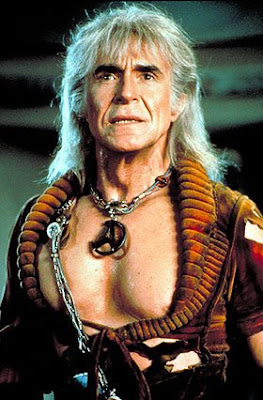
Posted on 07/18/2011 10:15:54 PM PDT by SunkenCiv
Explanation: What does the surface of asteroid Vesta look like? The brightest asteroid in the Solar System and the object which takes up about 10 percent of the entire mass of the main asteroid belt had never been seen up close before. Over the past few weeks, however, the robotic Dawn spacecraft became the first spacecraft ever to approach Vesta. A few days ago, just after attaining orbit, Dawn took the above image. Early images show Vesta to be an old and battered world, covered with craters, bulges, grooves, and cliffs. Studying Vesta may give clues to the formative years of our early Solar System, as the unusual world may be one of the largest remaining protoplanets. After a year of studying Vesta, Dawn is scheduled to leave orbit and, in 2015, approach the only asteroid-belt object that is larger: Ceres.
Poll: Which of these recently submitted images would make good future APODs?
(Excerpt) Read more at 129.164.179.22 ...
>>In the sequel “After Worlds Collide” it turns out that the Germans (who are atheist socialists with pop-bottle-bottom glasses) had built an escape rocket of their own, but had curiously enough failed to bring along any women. Hiilarity ensues, worthy of a Von Stuck painting.<<
Hey — at least we have the much more plausible “Space Cowboys.”
What is funny to me is that all those guys are too old to do Z80 Assembler — by that time they would have using FORTRAN V on CP/M.
I did 80/80 Assembler and even with a gun to my head I wouldn’t do it again. 4 fixed point registers, no indirection, hard-address pointers. I forgot it because it needed forgetting.
If you put an IMSAI in front of me I could toggle the blue switch and then put a doily on it as a coffee table..
I had something quite profound to share, but all this talk of nipple craters and sucky movies...and...ummm...what???

Kirk! Are these not the moobs of the superior race?
Ages ago one of our user group members who was pushing sixty I suppose gave one of the presentations at a monthly meeting, it was on programming, and much of his programming experience was on, ahem older platforms. I vaguely recall ten minutes about Octal.
The moon I was thinking of is Mimas:
http://www.solarviews.com/eng/mimas.htm
http://www.centauri-dreams.org/wp-content/uploads/2010/03/mimas_2.jpg
http://www.lpi.usra.edu/science/kiefer/Education/SSRG2-Craters/craterstructure.html
>> I vaguely recall ten minutes about Octal.<<
Hey, when you only have a Nyble, Octal is the way to go! ASCII without that silly entry bit.
Now EBCDIC and Octal — classic AC Fester in an DC Space capsule...
On the other hand, if one single planet was to disintegrate, for whatever reason, would not one expect the parts to be more jagged and irregular in shape?
“... its diameter sizing up at approximately 330 miles (530 kilometers)”
Maybe between the heat generated and gravity, the bigger parts would try to bead up, but the smithereens are probably more jagged.
The heat pics in link 2 are interesting. Looks like the heavy metals all got blown from the core. If you’re looking for a gold mine, that might be the place.
Just a tiny little thing.
I am glad it was running interference for number three.
Yup.
It’s a big airless rock.
Huh.
Disclaimer: Opinions posted on Free Republic are those of the individual posters and do not necessarily represent the opinion of Free Republic or its management. All materials posted herein are protected by copyright law and the exemption for fair use of copyrighted works.